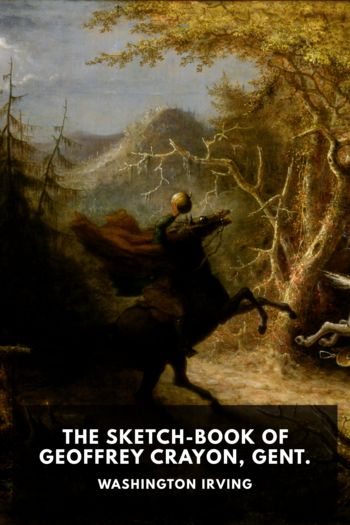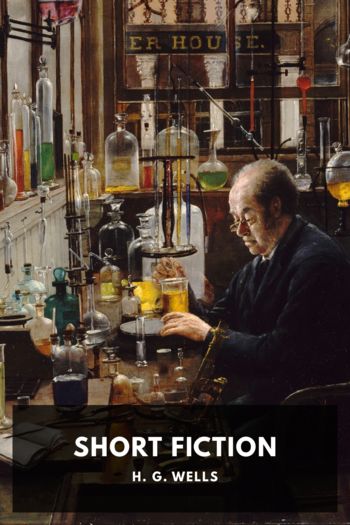The Origin of Species by Charles Darwin (ebook smartphone TXT) 📕

- Author: Charles Darwin
Book online «The Origin of Species by Charles Darwin (ebook smartphone TXT) 📕». Author Charles Darwin
With respect to what I have called the indirect action of changed conditions, namely, through the reproductive system being affected, we may infer that variability is thus induced, partly from the fact of this system being extremely sensitive to any change in the conditions, and partly from the similarity, as Kölreuter and others have remarked, between the variability which follows from the crossing of distinct species, and that which may be observed with plants and animals when reared under new or unnatural conditions. Many facts clearly show how eminently susceptible the reproductive system is to very slight changes in the surrounding conditions. Nothing is more easy than to tame an animal, and few things more difficult than to get it to breed freely under confinement, even when the male and female unite. How many animals there are which will not breed, though kept in an almost free state in their native country! This is generally, but erroneously attributed to vitiated instincts. Many cultivated plants display the utmost vigour, and yet rarely or never seed! In some few cases it has been discovered that a very trifling change, such as a little more or less water at some particular period of growth, will determine whether or not a plant will produce seeds. I cannot here give the details which I have collected and elsewhere published on this curious subject; but to show how singular the laws are which determine the reproduction of animals under confinement, I may mention that carnivorous animals, even from the tropics, breed in this country pretty freely under confinement, with the exception of the plantigrades or bear family, which seldom produce young; whereas, carnivorous birds, with the rarest exception, hardly ever lay fertile eggs. Many exotic plants have pollen utterly worthless, in the same condition as in the most sterile hybrids. When, on the one hand, we see domesticated animals and plants, though often weak and sickly, breeding freely under confinement; and when, on the other hand, we see individuals, though taken young from a state of nature perfectly tamed, long-lived, and healthy (of which I could give numerous instances), yet having their reproductive system so seriously affected by unperceived causes as to fail to act, we need not be surprised at this system, when it does act under confinement, acting irregularly, and producing offspring somewhat unlike their parents. I may add that as some organisms breed freely under the most unnatural conditions—for instance, rabbits and ferrets kept in hutches—showing that their reproductive organs are not easily affected; so will some animals and plants withstand domestication or cultivation, and vary very slightly—perhaps hardly more than in a state of nature.
Some naturalists have maintained that all variations are connected with the act of sexual reproduction; but this is certainly an error; for I have given in another work a long list of “sporting plants;” as they are called by gardeners; that is, of plants which have suddenly produced a single bud with a new and sometimes widely different character from that of the other buds on the same plant. These bud variations, as they may be named, can be propagated by grafts, offsets, etc., and sometimes by seed. They occur rarely under nature, but are far from rare under culture. As a single bud out of many thousands produced year after year on the same tree under uniform conditions, has been known suddenly to assume a new character; and as buds on distinct trees, growing under different conditions, have sometimes yielded nearly the same variety—for instance, buds on peach-trees producing nectarines, and buds on common roses producing moss-roses—we clearly see that the nature of the conditions is of subordinate importance in comparison with the nature of the organism in determining each particular form of variation; perhaps of not more importance than the nature of the spark, by which a mass of combustible matter is ignited, has in determining the nature of the flames.
Effects of Habit and of the Use or Disuse of Parts; Correlated Variation; InheritanceChanged habits produce an inherited effect as in the period of the flowering of plants when transported from one climate to another. With animals the increased use or disuse of parts has had a more marked influence; thus I find in the domestic duck that the bones of the wing weigh less and the bones of the leg more, in proportion to the whole skeleton, than do the same bones in the wild duck; and this change may be safely attributed to the domestic duck flying much less, and walking more, than its wild parents. The great and inherited development of the udders in cows and goats in countries where they are habitually milked, in comparison with these organs in other countries, is probably another instance of the effects of use. Not one of our domestic animals can be named which has not in some country drooping ears; and the view which has been suggested that the drooping is due to disuse of the muscles of the ear, from the animals being seldom much alarmed, seems probable.
Many laws regulate variation, some few of which can be dimly seen, and will hereafter be briefly discussed. I will here only allude to what may be called correlated variation. Important changes in the embryo or larva will probably entail changes in the mature animal. In monstrosities, the correlations between quite distinct parts are very curious; and many instances are given in Isidore Geoffroy St. Hilaire’s great work on this subject. Breeders believe that long limbs are almost always accompanied by an





Comments (0)